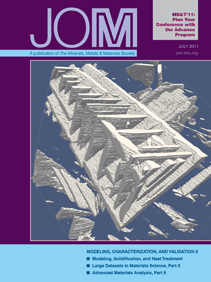VISIT THE
JOM COVER GALLERY
|
|
United States Supreme Court Rules
That Permanent Injunctions Are Not
Automatic in Patent Cases
Arnold B. Silverman
A recent U.S. Supreme Court
decision ruled that a prevailing patent
owner in a patent infringement case
cannot assume that it will obtain a
permanent injunction against future
infringing conduct. In the past, courts
have generally granted a permanent
injunction to the prevailing patent
owner in patent infringement cases.
The Supreme Court in eBay v.
MercExchange unanimously concluded
there is no basis in law for treating
the equitable remedy of a permanent
injunction differently in patent cases
from other types of cases. In other
cases, the court must make a four-point
evaluation before it decides whether a
permanent injunction will issue.
The Supreme Court was confronted
with the issue of how the prior practice
of granting permanent injunctions to
the party obtaining a court ruling that
a patent was valid and infringed and
the prior court decisions was to be
reconciled with the traditional four point
test for establishing the right to a
permanent injunction in other types of
cases.
An injunction is available in the
discretion of the court to require a
party to either refrain from specifically
identified conduct or to compel the
doing of some positive act. In a patent
case, a permanent injunction would
typically compel the infringer to refrain
from engaging in conduct which would
violate the patent for the remainder of
the term of the patent. One who fails
to comply with the requirements of
an injunction can be found to be in
contempt of court and can be fined and
subjected to other remedies.
In general, the decision as to whether
to grant a permanent injunction to the prevailing party in litigation rests
within the discretion of the court. The
prevailing party seeking a permanent
injunction must establish (a) that the
failure to grant an injunction would
result in irreparable injury to the
prevailing party and (b) that money
damages are inadequate to compensate
for the injury and (c) that balancing
the hardship on the respective parties
of the injunction being granted or not
granted would be in favor of granting
the injunction and (d) that the public
interest would not be disserved by the
granting of a permanent injunction.
These standards have been applied in
non-patent cases; however, in patent
cases, the granting of the permanent
injunction has generally become an
automatic matter where the patentee
has established infringement of a valid
patent. The Supreme Court, while
ruling that the traditional four-point
test must be considered by the court,
did not rule on whether in the eBay
case a permanent injunction should be
granted, but rather remanded the case
to the lower court for a ruling after the
lower court applied the required test.
The case will obviously have an
impact on patent owners who are not
practicing the inventions commercially,
as, among other things, the proof of
“irreparable harm” will be made more
difficult. The court may have been
influenced by the so-called “patent
trolls” who acquire patents with a view
toward obtaining large settlements
after making a charge of infringement.
The threat of obtaining a permanent
injunction against an infringer has
been employed as leverage to obtain a
substantial settlement. The eBay case
decision weakens this threat.
It has also been suggested that a
patent owner, who is not practicing
the invention but has expressed a
willingness to license the patent,
would be placed at a disadvantage with
respect to satisfying the “irreparable
harm” standard.
In two concurring opinions, justices
suggested that prior courts have taken
into consideration the four-point tests
and have reached the conclusion that
monetary recovery alone is not an
adequate remedy in patent cases. One
of the opinions suggested that in certain
types of patents, such as in method-of-doing-business patents, the four-point
test might be applied differently than
for patents on other subject matter.
In summary, in evaluating a patent
infringement issue, it will be important
for both sides to look at the Supreme
Court’s mandate that the four-point test
applied in other types of cases must be
applied in patent cases as well. This will
present an additional challenge to one
seeking to enforce the patent as a result
of the enhanced proof requirements for
one seeking a permanent injunction. It
remains to be seen whether lower courts
following the Supreme Court ruling
regarding the four-point test results
in a meaningful amount of denials of
motions for permanent injunctions or,
in the alternative, whether application
of the standards due to real or perceived
uniqueness of the patent case will
approximate automatic granting of
permanent injunctions.
Arnold B. Silverman is a member of the Intellectual
Property Department and a member of Eckert
Seamans Cherin & Mellott, LLC in Pittsburgh,
Pennsylvania.
For more information, contact A.B. Silverman at
Eckert Seamans Cherin & Mellott, LLC, 600 Grant
Street, 44th Floor, Pittsburgh, Pennsylvania 15219
(412) 566-2077; fax (412) 566-6099; e-mail abs@escm.com. |

